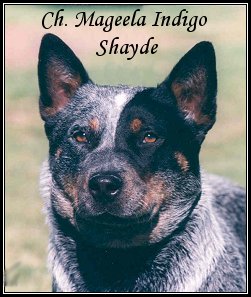The exact history of the ACD is controversial, with several variations of a common theme. As with any historical data, there are gaps and red herrings in the records, and there are many who prefer one version over another and are loath to change their ideas unless slapped about the head with irrefutable proof.
In 1840 Thomas Hall, a member of the Hall family who owned a pastoral empire, was attempting to breed a cattle dog that would help them with the wild range cattle runs through mountainous and heavily forested areas. All existing working dogs were deficient in one or more respects, they either had a tendency to be noisy,
thus scaring the cattle unnecessarily, or gave too savage a bite while controlling the cattle, didnt have enough stamina for the duration of the run, or would try and herd the cattle from the front, which resulted in the cattle goring the dog.
Hall crossed an imported working dog with a dingo. The exact type of imported working dog is a topic of debate and was historically referred to as a "Merle". This has led to the belief the dogs were smooth haired blue merle Scotch Collies or other merle dogs. However modern genetic science has shown that the actual Merle
breed gene is not present in the ACD, so the term merle was probably a descriptive one of colour rather than breed. The actual breed may have been one of the many working dogs which disappeared with the industrial revolution. The dingo is a wild Australian dog which accompanied the first humans when they arrived in Australia.
The dingo is silent and passed that trait onto Hall's working dogs as well as the trait to come at their prey from behind. The dogs bred from this crossing became known as Hall's Heelers. Hall continued his breeding experiments until his death in 1870.
Another controversial issue in the history of the ACD is how around the time of Hall's death two brothers, Jack and Harry Bagust, are said to have bred Hall's Heelers with the Dalmation, an attempt to give the cattle dog the ability to work better with horses, and also to acquire the loyalty and protectiveness of the dalmation. However popular ACD history cites that the resulting dogs had lost some of their
working ability and so the black and tan kelpie was introduced into the blood lines with the desired result of restoring the work ability, as well as passing on the kelpie's intelligence. The result was a strong, hard working dog with great stamina, and the instinct and intelligence to herd cattle.
 It is possible none of this is true and the dalmation/kelpie infusion could be one of those self perpetuating myths.
The first mention of this event in any writing about the ACD does not appear until about 50 years after the supposed infusion of dalmation and kelpie, long after the death of anyone who could dispute such a statement. A further 10-15 years passed before the infusion was specifically attributed to the Bagusts. The Australian Cattle Dog
Pedigree database (an ongoing historical and genetic research project) says that genetic research indicates it is unlikely that the dalmation is a mainstream ancestor of the modern ACD.
See the link below for "Early 20th Century Cattle Dogs" for more info.
It is possible none of this is true and the dalmation/kelpie infusion could be one of those self perpetuating myths.
The first mention of this event in any writing about the ACD does not appear until about 50 years after the supposed infusion of dalmation and kelpie, long after the death of anyone who could dispute such a statement. A further 10-15 years passed before the infusion was specifically attributed to the Bagusts. The Australian Cattle Dog
Pedigree database (an ongoing historical and genetic research project) says that genetic research indicates it is unlikely that the dalmation is a mainstream ancestor of the modern ACD.
See the link below for "Early 20th Century Cattle Dogs" for more info.
Sadly none of these breeders kept records of what they had done. It wasnt until 1893 that Robert Kaleski took an interest in breeding these dogs and began recording all he could, although not everyone agrees the ACD history is as Mr Kaleski wrote it (he was, for example, convinced Hall's Heelers were a mixture of the Dingo and the Scotch Collie, and that Red ACDs have more Dingo in them than Blue ACDs).
Kaleski drew up a standard for the breed which was accepted by the Cattle and Sheepdog Club of Australia, then the Kennel Club of New South Wales in 1903 and later a revised standard and the American Standard was accepted by the Australian Kennel Club in 1963. Without the dedication and commitment of Robert Kaleski it is likely the ACD breed would have disappeared.



